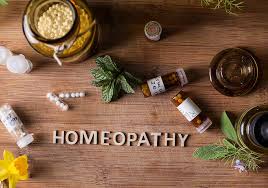Homeopathy was discovered by a German scientist Dr. Samuel Hahnemann in 1796 and has been verified clinically for 200 years. The term “homeopathy” was coined by Hahnemann and first appeared in print in 1807.
Hahnemann conceived of homeopathy while translating a medical treatise by the Scottish physician and chemist William Cullen into German. Being skeptical of Cullen’s theory concerning cinchona’s use for curing malaria, Hahnemann ingested some bark specifically to investigate what would happen. He experienced fever, shivering and joint pain: symptoms similar to those of malaria itself. From this, Hahnemann came to believe that all effective drugs produce symptoms in healthy individuals similar to those of the diseases that they treat, in accord with the “law of similars” that had been proposed by ancient physicians.
Hahnemann’s law of similars is an ipse dixit that does not derive from the scientific method. This led to the name “homeopathy”, which comes from the Greek: ὅμοιος hómoios, “-like” and πάθος páthos, “suffering”.
Classification of Diseases in Homeopathy
In Homeopathy, the diseases are classified into four major groups.
1. Indisposition
Indisposition is a category of illness due to some exciting cause. The common exciting causes may be continuous exposure to strong odors, presence of foreign bodies, improper hygiene, poor sanitation, living in a damp or ill-ventilated house, irregular or improper diet or lack of exercise. Such causative factors may bring a feeling of unwellness in individuals and thereby one may not be comfortable to attend daily work.
2. Diseases due to Mechanical or External sources
These include fractures, strains, poisoning, and exposure to extremes of heat or colds like frostbite and sunstroke. These diseases may be caused by some mechanical means or external sources. They are mainly self-curative or can be set right by regulating environmental or by precipitating cause. Medicines can be used to assist or hasten the process of recovery. Removal of the causative factor, if still persists, is the first procedure to be followed for a cure. It may involve surgical procedures or rectifying the diet or removal of irritating substances.
3. Acute Diseases
Acute diseases are the result of a rapid morbid process of the deranged vital force. Their onset is sudden, have a definite course and quick-expression of action. They terminate within a short time either with complete recovery or with the death of the patient.
4. Chronic Diseases
Chronic diseases have a gradual onset; slow progress, derange the living organism in their own peculiar manner resulting in gradual deviation of health. There may be unlimited life long-suffering with further derangement until the living organism is fully destroyed. The chronic diseases are caused by the chronic miasms Psora, Syphilis and Sycosis.

